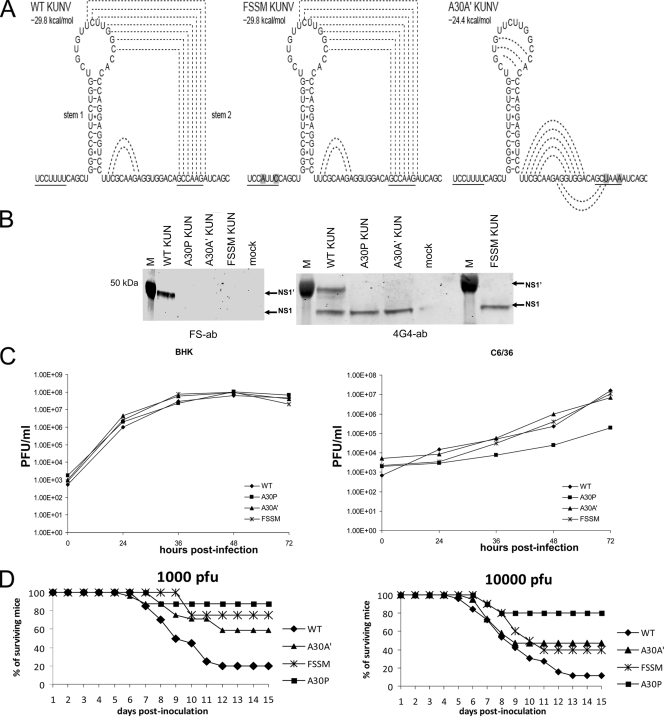FIG. 4.
Sequence requirements for the production of NS1′ and its role in virus infection. (A) Predicted structure(s) of wild-type and mutated heptanucleotide or pseudoknot-forming sequences in KUNV. Altered nucleotides are highlighted, and stimulatory elements are underlined. Predicted interactions between bases in the pseudoknot structure are shown as dashed lines. (B) Western blot detection of NS1 and NS1′ with 4G4 or FS antibodies in lysates from Vero cells infected with WT or mutant KUNV viruses. Lysates from WT-, A30P-, A30A′-, or FSSM-infected cells were separated by PAGE and transferred onto nitrocellulose membranes followed by detection with 4G4 or FS antibodies as in Fig. 2C. (C) Kinetics of replication of WT, A30P, A30A′, and FSSM viruses in BHK and C6/36 cells. Cells were infected at an MOI of 1, and viral accumulation was measured up to 96 h after inoculation using plaque assays of harvested culture fluids. Growth kinetics from a typical experiment are shown. (D) Neuroinvasiveness of mutant viruses in mice. Swiss outbred weanling mice (18 to 19 days old) were inoculated with 1,000 or 10,000 PFU of WT KUNV or mutant viruses. Survival rates were recorded daily up to day 15 after inoculation, when the experiments were terminated. Shown are compiled results from multiple (up to 4) experiments involving WT KUNV (1,000 PFU, 20 mice; 10,000 PFU, 26 mice), KUNV A30P (1,000 PFU, 10 mice; 10,000 PFU, 10 mice), KUNV A30A′ (1,000 PFU, 24 mice; 10,000 PFU, 19 mice), and KUNV FSSM (1,000 PFU, 8 mice; 10,000 PFU, 10 mice).

